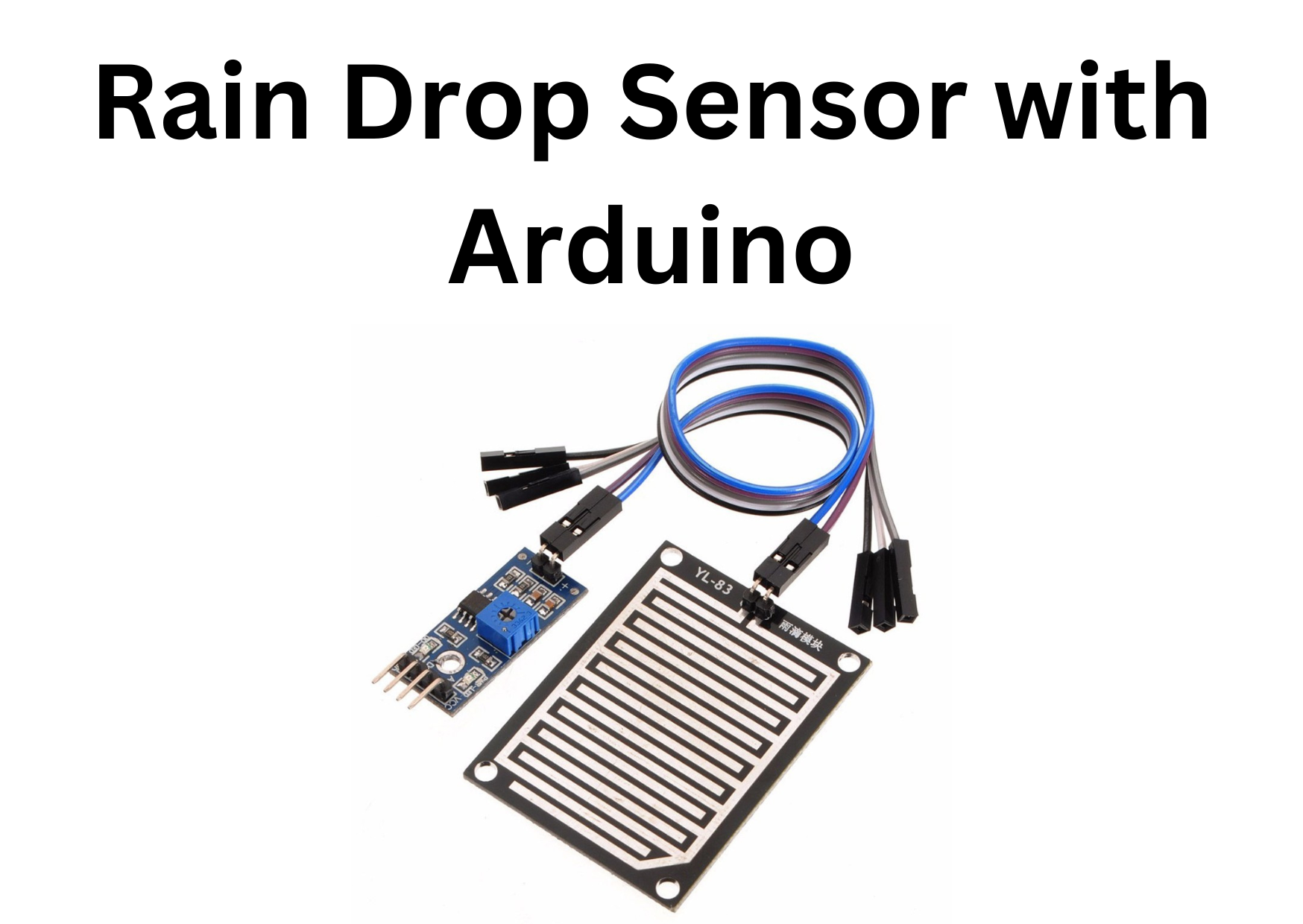What is Rain Drop Sensor with Arduino Leave a comment
A rain drop sensor for Arduino, often refer to as a rain sensor or rain detector, is an electronic device design to detect the presence of rain or water droplets. These sensors are commonly use in various applications, including weather monitoring systems, automated irrigation systems, and rain-triggered alarms. The primary purpose of a raindrop sensor is to provide information about precipitation, enabling systems to respond accordingly.
Here’s a brief introduction to raindrop sensors:
How Raindrop Sensors Work: Raindrop sensors operate on the principle of conductivity. They typically consist of a set of conductive traces or pads on a substrate, with one trace acting as the reference and another as the sensing element. The sensing trace is expose to the environment, allowing it to come into contact with raindrops or water droplets.
When water droplets make contact with the sensing trace, they create a conductive path between the sensing and reference traces. This change in conductivity is detecte by the sensor’s electronics. When it’s not raining, the sensor remains dry, and the conductivity between the traces is minimal.
Applications of Raindrop Sensors:
- Weather Monitoring: Raindrop sensors are use in weather stations to measure rainfall intensity and provide data for weather forecasting.
- Automatic Rain-Triggered Systems: They are integrate into automated systems to control actions such as closing windows, retracting awnings, and activating windshield wipers on vehicles when rain is detecte
- Irrigation Control: In agriculture and landscaping, raindrop sensors help conserve water by preventing irrigation systems from operating during or after rainfall.
- Home Automation: Rain sensors can be use in smart home automation systems to trigger actions like closing roof windows and blinds when it starts raining.
- Security Systems: They are use to detect weather-related security risks, such as leaks in a building or flooding in low-lying areas.
- Automotive Applications: Rain sensors are commonly found in modern vehicles to automatically adjust the speed of windshield wipers based on the intensity of rainfall.
Types of Raindrop Sensors:
There are different types of raindrop sensors available, including:
- Analog Raindrop Sensors: These sensors provide an analog voltage output that varies with the level of moisture. The voltage level is use to determine the presence and intensity of rain.
- Digital Raindrop Sensors: Digital sensors provide a binary output, indicating either the presence or absence of rain. They are simpler to use for basic rain detection.
- Optical Rain Sensors: Some rain sensors use optical methods to detect raindrops. They emit and receive infrared light, and the presence of raindrops can disrupt the light path.
- Capacitive Rain Sensors: Capacitive sensors measure changes in capacitance caused by the presence of water, such as raindrops.
The choice of raindrop sensor type depends on the specific application and the level of precision and control required.
In summary, raindrop sensors are valuable devices that help automate and control various systems and processes based on weather conditions. They play a crucial role in enhancing efficiency, conserving resources, and improving the overall functionality of weather-related systems and devices.
***********************************************************************************************************
Arduino Code
/***********************************************
* Company Name:LK Tronics
* Author: Research & Development Department
EXPERT GUIDANCE TO BRING YOUR DREAM PROJECT TO LIFE
* Date: 2020/ 03/ 12
* https://lk-tronics.com/
***********************************************
* All rights reserved. No part of this code may be reproduced, distributed,
* or transmitted in any form or by any means, including photocopying, recording,
* or other electronic or mechanical methods, without the prior written permission
* of LK Tronics, except in the case of brief quotations embodied in
* critical reviews and certain other noncommercial uses permitted by copyright law.
************************************************/
const int rainSensorPin = A0; // Analog pin connected to the raindrop sensor
void setup() {
Serial.begin(9600); // Initialize serial communication
}
void loop() {
int sensorValue = analogRead(rainSensorPin); // Read the analog value from the sensor.You may need to adjust the threshold value based on your sensor and environment.
// Lower values indicate more water or rain.
int threshold = 500; // Adjust this value as needed
if (sensorValue < threshold) {
Serial.println("Rain detected!");
} else {
Serial.println("No rain detected.");
}
delay(1000); // Delay for a second
}***********************************************************************************************************



